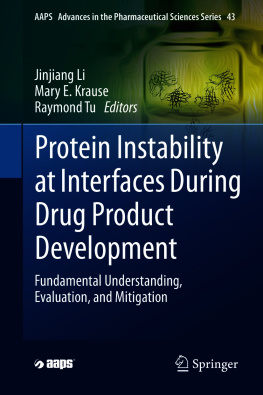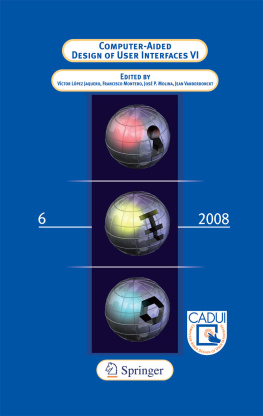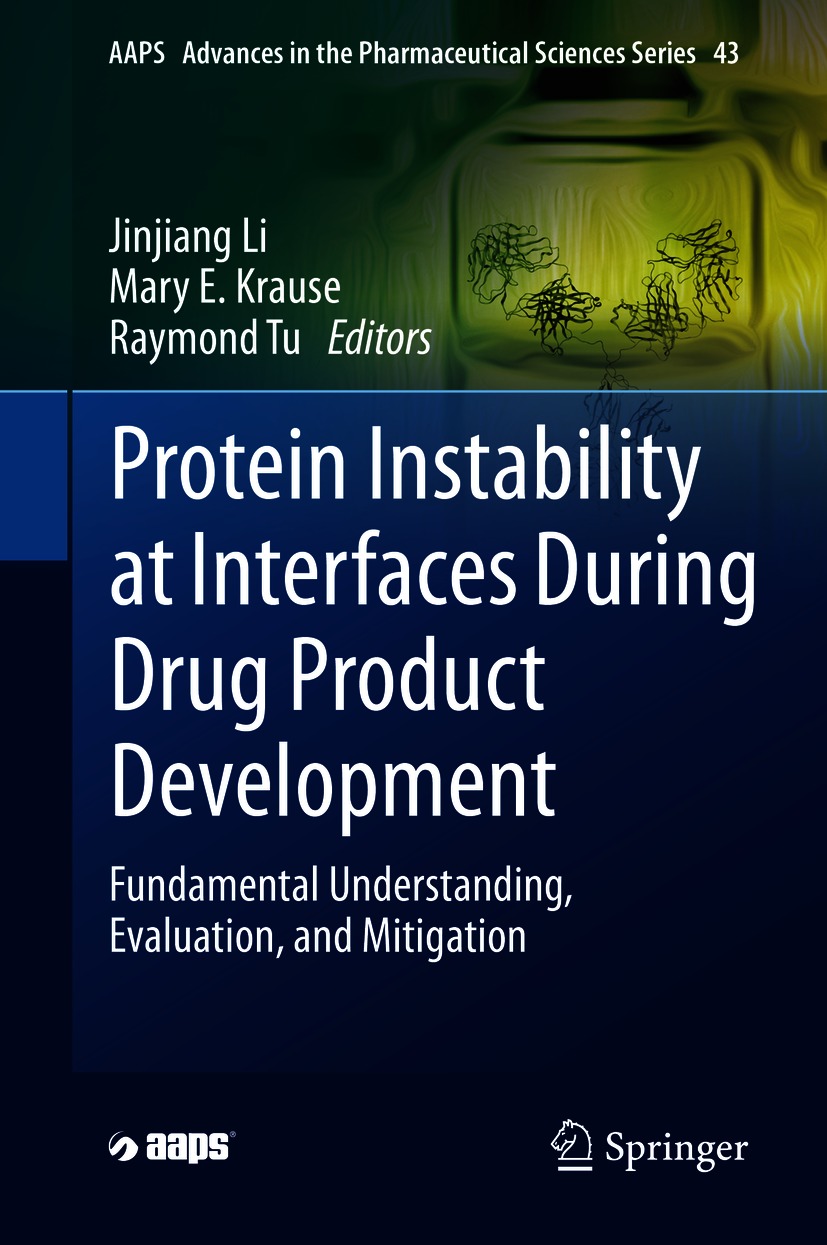Volume 43
AAPS Advances in the Pharmaceutical Sciences Series
Series Editor
Yvonne Perrie
Strathclyde Institute of Pharmacy and Biomedical Sciences, University of Strathclyde, Glasgow, UK
The AAPS Advances in the Pharmaceutical Sciences Series, published in partnership with the American Association of Pharmaceutical Scientists, is designed to deliver volumes authored by opinion leaders and authorities from around the globe, addressing innovations in drug research and development, and best practice for scientists and industry professionals in the pharma and biotech industries.
More information about this series at http://www.springer.com/series/8825
Editors
Jinjiang Li , Mary E. Krause and Raymond Tu
Protein Instability at Interfaces During Drug Product Development
Fundamental Understanding, Evaluation, and Mitigation
1st ed. 2021

Logo of the publisher

Logo of the publisher
Editors
Jinjiang Li
Department of Formulation Development Nevakar Inc., Bridgewater, NJ, USA
Mary E. Krause
Drug Product Development, Bristol Myers Squibb, New Brunswick, NJ, USA
Raymond Tu
Chemical Engineering, The City College of New York - CUNY, New York, NY, USA
ISSN 2210-7371 e-ISSN 2210-738X
AAPS Advances in the Pharmaceutical Sciences Series
ISBN 978-3-030-57176-4 e-ISBN 978-3-030-57177-1
https://doi.org/10.1007/978-3-030-57177-1
American Association of Pharmaceutical Scientists 2021
This work is subject to copyright. All rights are solely and exclusively licensed by the Publisher, whether the whole or part of the material is concerned, specifically the rights of translation, reprinting, reuse of illustrations, recitation, broadcasting, reproduction on microfilms or in any other physical way, and transmission or information storage and retrieval, electronic adaptation, computer software, or by similar or dissimilar methodology now known or hereafter developed.
The use of general descriptive names, registered names, trademarks, service marks, etc. in this publication does not imply, even in the absence of a specific statement, that such names are exempt from the relevant protective laws and regulations and therefore free for general use.
The publishers, the authors, and the editors are safe to assume that the advice and information in this book are believed to be true and accurate at the date of publication. Neither the publishers nor the authors or the editors give a warranty, express or implied, with respect to the material contained herein or for any errors or omissions that may have been made. The publishers remain neutral with regard to jurisdictional claims in published maps and institutional affiliations.
This Springer imprint is published by the registered company Springer Nature Switzerland AG
The registered company address is: Gewerbestrasse 11, 6330 Cham, Switzerland
Preface
Over the last two decades, the landscape of medicine has changed significantly, as biologic therapeutics have played an increasingly pivotal role in disease treatment. The recent emergence of protein-based immuno-oncological therapeutics has altered the treatment pathway for many cancer patients, providing new hope in various diseases with high mortality rates. The discovery and development of biological therapies for many diseases, such as cancer and diabetes, have been the focus of numerous international pharmaceutical and biotechnological companies, and the development of biologics frequently outpaces that of small molecule drugs. Unlike small molecule drug candidates, the therapeutic function of proteins relies not only on the primary structure (sequence) but also on the precisely folded higher order structure. Disruption of these higher order structures could result in the loss of therapeutic functions and, thus, the loss of efficacy. Therefore, during the manufacturing and formulation of biologics, the preservation of the often-fragile higher order structure of proteins is critical. Because proteins are typically surface-active, they tend to adsorb to interfaces, potentially leading to changes in conformation and denaturation. During the development and manufacturing of biologics, proteins are subjected to interfacial stresses that are present from the early-stage isolation of drug substances through eventual storage and clinical administration.
When discussing the scope of this book, we understood that the breadth of topics relevant to the scalable production and distribution of biologic drug products was wide-ranging. As a consequence, this book examines the fundamental understanding of the interfacial behavior of proteins as well as the applications of interfacial stresses in drug development. Contributions from both academicians and industrialists are folded together to illustrate how the interfacial behavior of these complex drug products can be effectively modeled and how existing protocols in industry can be used to mitigate unwanted aggregation and precipitation. Taken together, the collected sections define the impact of these interfacial stresses in the pharmaceutical development and manufacturing of biologics for an audience that should include graduate students who are hoping to enter this field and professionals who want a deeper understanding of the role of interfaces in drug development. Additionally, we believe that the publication of this book will catalyze additional research in this area.
We thank our authors for taking their precious time to contribute this book. Additionally, we are indebted to all the reviewers of the various chapters, including Atul Bhangale, Danny Chow, Daan Crommelin, Bart Demeule, Frank Etzler, Archana Jaiswal, Cavan Kalonia, Ajit Narang, Bjorn Peters, Ronak Shah, and Joseph Zasadzinski. Finally, we are grateful to the staff of Springer for their professional expertise and guidance.
Jinjiang Li
Mary E. Krause
Raymond Tu
Bridgewater, NJ New Brunswick, NJ New York, NY
Contents
Jinjiang Li , Mary E. Krause and Raymond Tu
Ankit D. Kanthe , Raymond Tu and Charles Maldarelli
Ankit D. Kanthe , Charles Maldarelli and Raymond Tu
Abhiram Arunkumar and Dongyoun Jang
Mary E. Krause , Songyan Zheng , Ian C. Shieh and Maria O. Ogunyankin
Coleman Vaclaw , Valerie Pringle , Aishik Chakraborty and Prajnaparamita Dhar
Ian C. Shieh and Yuan Cheng
Yuan Cheng , Miguel Saggu and Justin C. Thomas
Stuart Wang , Weixian Shi and Xiaodong Chen
Susan Jordan , Joshua S. Katz and Benjamin Yezer
Evgenyi Shalaev and John J. Hill
Susan Jordan , Jim Curtis and Lloyd Waxman
Jinjiang Li and Duohai Pan











